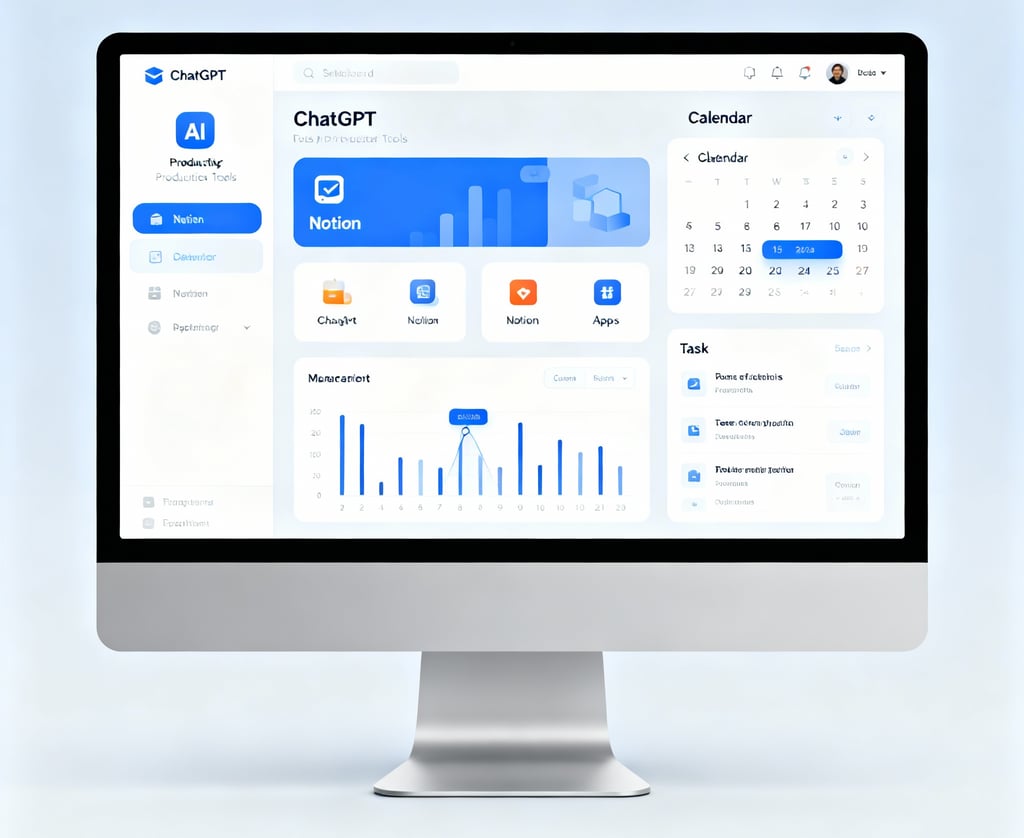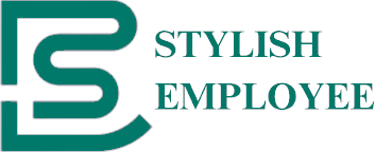Work from Home Productivity Hacks: The Ultimate 2025 Guide
Work from Home Productivity Hacks: The Ultimate 2025 Guide
9/27/202511 min read


Work From Home Productivity Hacks: The Ultimate 2025 Guide
Working from home isn't just a temporary trend—it's the future of work. With 48% of the global workforce now working remotely in 2025, up from just 20% in 2020, mastering work-from-home productivity has become essential for career success and personal well-being. This comprehensive guide provides you with science-backed strategies, cutting-edge AI tools, and practical hacks to maximize your productivity while maintaining a healthy work-life balance.
The 2025 Remote Work Reality: Challenges and Misconceptions
Latest Remote Work Statistics That Will Surprise You
The remote work landscape in 2025 presents both unprecedented opportunities and unique challenges:
Remote workers are 51 minutes more productive daily compared to their office counterparts
77% of remote workers report increased productivity, with 30% completing more work in less time
90% of workers report being as productive or more productive when working remotely
However, 69% of remote workers still experience burnout, highlighting the need for better productivity strategies
Common WFH Productivity Misconceptions Debunked
Myth 1: Remote workers are less engaged and motivated
Reality: Studies show that remote workers actually work 10% longer hours and take fewer sick days
Myth 2: Collaboration suffers in remote environments
Reality: 97 of the Fortune 100 Best Companies now support remote or hybrid work, with 84% reporting strong colleague cooperation
Myth 3: Remote work is just a pandemic trend
Reality: 83% of employees now value work-life balance over pay, making flexibility a permanent expectation
Why WFH Productivity Matters More Than Ever
The Cultural Shift Toward Results-Oriented Work
The traditional 9-to-5 office culture is rapidly evolving into a results-oriented work environment. Companies are discovering that productivity increases by 13-47% when employees have the flexibility to work from home. This shift represents more than just location independence—it's a fundamental reimagining of what productive work looks like.
Economic Impact of Remote Work Productivity
Poor remote work productivity doesn't just affect individuals—it has massive economic implications:
Low employee engagement costs the global economy $438 billion annually
Boosting engagement could add $9-10 trillion to global GDP
Companies with remote-first policies report 33% lower turnover rates
Psychological Tricks to Boost Focus
The Invisible Commute Ritual
One of the most effective psychological hacks for remote workers is creating an "invisible commute"—a deliberate routine that signals the transition from "home mode" to "work mode."
How to implement:
Morning routine: Shower, dress professionally, and have breakfast away from your workspace
Commute simulation: Take a 10-minute walk around the block or do light exercise
Workspace activation: Set up your desk, review your daily goals, and start your first Pomodoro session
Real-world example: Sarah, a freelance marketing consultant, starts each day with a 15-minute yoga session followed by a "commute" to her home office. This ritual increased her focused work time from 4 to 7 hours daily.
Context Switching Mastery
Context switching—the mental effort required to shift between different tasks—can reduce productivity by up to 40%. Here's how to minimize its impact:
Single-tasking blocks: Dedicate specific time blocks to similar tasks
Buffer time: Add 5-minute buffers between different types of work
Mental reset techniques: Use breathing exercises or brief meditation between contexts
Task Batching for Deep Work
Group similar activities together to maintain cognitive momentum:
Communication batch: Handle all emails and messages in designated 30-minute blocks
Creative batch: Schedule all creative work during your peak energy hours
Administrative batch: Group all administrative tasks into one session
25+ Actionable Productivity Hacks
Deep Work Strategies
1. The 90-Minute Rule
Research shows our brains operate in 90-minute cycles. Schedule your most challenging work during these natural energy peaks.
2. Digital Minimalism Setup
Use only essential apps during work hours
Turn off all non-critical notifications
Implement app timers for social media
3. The Two-Minute Rule
If a task takes less than two minutes, do it immediately rather than adding it to your to-do list.
Time Management Techniques
4. The Pomodoro Technique 2.0
The classic 25-minute work sprints with 5-minute breaks, enhanced with modern productivity apps.
How it works:
Choose a single task
Set timer for 25 minutes
Work with complete focus
Take a 5-minute break
After 4 Pomodoros, take a 15-30 minute break
Pro tip: Use AI-powered Pomodoro apps that adapt to your productivity patterns
5. Time Blocking with Energy Management
Instead of just scheduling tasks, align them with your energy levels:
High-energy blocks: Complex problem-solving, creative work
Medium-energy blocks: Meetings, planning, research
Low-energy blocks: Email, administrative tasks
6. The Eisenhower Matrix for Remote Work
Categorize tasks by urgency and importance:
Quadrant 1: Urgent + Important (Do first)
Quadrant 2: Important + Not Urgent (Schedule)
Quadrant 3: Urgent + Not Important (Delegate)
Quadrant 4: Not Urgent + Not Important (Eliminate)
Digital Productivity Hacks
7. Email Automation Rules
Set up filters to automatically sort emails into folders, reducing decision fatigue.
8. Keyboard Shortcuts Mastery
Learning 10-15 essential shortcuts can save 2+ hours weekly.
9. Voice-to-Text Technology
Use voice dictation for first drafts, emails, and notes to increase writing speed by 200%.
Health and Energy Hacks
10. The 20-20-20 Rule
Every 20 minutes, look at something 20 feet away for 20 seconds to prevent eye strain.
11. Micro-Movement Sessions
Set hourly reminders for 2-minute movement breaks—even desk stretches boost cognitive function.
12. Strategic Caffeine Timing
Consume caffeine 1-2 hours after waking for optimal alertness without afternoon crashes.
Self-Reward Systems
13. Gamification Approach
Award points for completed tasks
Set weekly challenges
Create achievement badges for major milestones
14. Progressive Reward System
Small rewards for daily goals, bigger rewards for weekly achievements, and significant rewards for monthly targets.
15. Social Accountability
Share daily goals with a colleague or join virtual co-working sessions for external motivation.
AI Tools & Apps for Maximum Productivity
Task Management and Scheduling
Motion: Your AI-Powered Productivity Assistant
Motion automatically schedules tasks based on deadlines, priorities, and available time.
Key features:
Auto-scheduling tasks on your calendar
Team collaboration with capacity management
Real-time schedule adjustments
Use case: Virtual team manager Lisa uses Motion to automatically distribute tasks among her 8-person team, resulting in 35% better project completion rates.
Pricing: Individual ($19/month), Team ($12/user/month)
AI Writing and Communication
Chat GPT for Workplace Productivity
Beyond basic conversations, Chat GPT excels at workplace tasks:
Specific use cases:
Email drafting: Create professional emails from bullet points
Meeting summaries: Transform meeting notes into actionable summaries
Content creation: Generate reports, proposals, and documentation
Data analysis: Interpret spreadsheets and create insights
Pro tip: Create custom GPTs for your specific role (e.g., "Marketing Assistant GPT" or "Project Manager GPT")
GrammarlyGO
AI-powered writing assistant that goes beyond grammar:
Tone adjustment: Adapt writing style for different audiences
Content generation: Create outlines and expand ideas
Professional polish: Enhance clarity and concisiveness
Meeting and Collaboration Tools
Otter.ai: Meeting Intelligence
Automatically joins meetings to provide:
Live transcription with 95% accuracy
AI-generated summaries with action items
Searchable meeting database
Integration with Zoom, Teams, and Google Meet
Real-world impact: Remote marketing agency reduced post-meeting follow-up time by 60% using Ottr. ai's automated summaries.
Krisp AI Noise Cancellation
Essential for remote workers dealing with:
Household noise during calls
Background distractions
Poor audio quality
Features:
Real-time noise cancellation
Call recording and transcription
Meeting insights and analytics
Project Management AI
Notion AI: All-in-One Workspace
Combines note-taking, project management, and AI assistance:
AI capabilities:
Smart content generation: Create project briefs, meeting notes, and documentation
Database automation: Auto-populate fields and create templates
Q&A functionality: Query your workspace data conversationally
Use case: Remote startup founder uses Notion AI to maintain company wiki, track OKRs, and generate weekly team updates, saving 8 hours per week.
Focus and Time Management
Clockwise: Focus Time Optimizer
AI-powered calendar assistant that:
Automatically blocks focus time based on your work patterns
Minimizes context switching by grouping similar meetings
Provides productivity analytics and insights
Reclaim: Smart Calendar Management
Automatically schedules:
Focus time for deep work
Buffer time between meetings
Personal habits and breaks
Task completion based on priority
Ultimate Home Office Setup Guide
Ergonomic Essentials
Chair Selection Criteria
Your chair is your most important investment—poor seating causes 40% of workplace injuries:
Must-have features:
Lumbar support that matches your spine's natural curve
Adjustable height with feet flat on floor
Armrests supporting elbows at 90-degree angle
Quality materials that breathe and last
Top recommendations:
Herman Miller Aeron (premium)
Steelcase Leap (mid-range)
IKEA Markus (budget-friendly)
Desk Setup for Productivity
Monitor positioning:
Top of screen at or slightly below eye level
20-24 inches from eyes
Slight backward tilt to reduce glare
Keyboard and mouse:
Wrists straight and neutral
Elbows close to body
Mouse at same level as keyboard
Lighting and Environment
Natural Light Optimization
Position your desk perpendicular to windows to:
Reduce screen glare
Maximize natural light benefits
Maintain circadian rhythm regulation
Artificial Lighting Setup
Task lighting: Adjustable desk lamp with warm light (2700K-3000K)
Ambient lighting: Soft overhead lighting to reduce eye strain
Blue light filters: Use after sunset to improve sleep quality
Plants and Air Quality
Productivity-Boosting Plants
Research shows plants can increase productivity by 15%:
Snake plants: Low maintenance, air purifying
Pothos: Thrives in office conditions
Peace lilies: Improves humidity and air quality
Technology and Gadgets
Essential Tech Stack
Dual monitors: Increases productivity by 20-50%
Standing desk converter: Alternate between sitting and standing
Quality webcam: Professional appearance for video calls
Noise-canceling headphones: Essential for focused work
Smart Home Integration
Smart lighting: Automatically adjusts throughout the day
Air quality monitors: Optimize temperature and humidity
Voice assistants: Quick scheduling and reminders
Time Management Strategies with Practical Examples
The PARA Method for Digital Organization
Projects: Active work with specific outcomes and deadlines
Areas: Ongoing responsibilities to maintain
Resources: Topics of future interest
Archive: Inactive items from above three categories
Implementation example:
Remote consultant David organizes his Notion workspace using PARA:
Projects: "Q4 Marketing Campaign," "Website Redesign"
Areas: "Client Management," "Professional Development"
Resources: "Industry Reports," "Design Inspiration"
Archive: "Completed Projects 2024"
Energy-Based Scheduling
Identify Your Chronotype
Morning types: Peak performance 9 AM - 12 PM
Evening types: Peak performance 2 PM - 6 PM
Bi-modal types: Two peaks at 10 AM and 6 PM
Practical application:
Schedule demanding cognitive work during peak hours, routine tasks during energy dips.
The Getting Things Done (GTD) Method for Remote Workers
Five-step process:
Capture: Collect all tasks in trusted system
Clarify: Define what each item means and requires
Organize: Sort by context and priority
Reflect: Review and update regularly
Engage: Take action with confidence
Remote work adaptation: Use digital tools like Todoist or Motion for seamless capture and organization across devices.
Managing Social & Environmental Distractions
Family and Household Management
Setting Boundaries with Family
Physical boundaries: Closed door = do not disturb
Communication boundaries: Set "office hours" for family members
Emergency protocols: Clear guidelines for true emergencies only
Case study: Work-from-home parent Maria implemented a "red light/green light" system with her children—red light means no interruptions except emergencies, green light means available for quick questions.
Social Media and Digital Distractions
App-Based Solutions
Cold Turkey: Blocks distracting websites and apps
Freedom: Cross-platform blocking for phones and computers
Opal: iOS-focused screen time management
Environmental Design
Keep phone in another room during deep work
Use a separate browser for work and personal activities
Create visual cues (specific workspace setup) that signal work mode
Managing Household Tasks
Time-Blocking Household Duties
Morning block: 15 minutes for dishes/tidying
Lunch break block: 20 minutes for laundry/quick chores
End-of-day block: 10 minutes preparation for next day
The Two-List Strategy
Work-day list: Only tasks that can be done during work breaks
After-hours list: Tasks requiring extended time or focus
Work-Life Boundary Formation
Digital Boundaries
Communication Protocols
Response time expectations: Set clear guidelines for email and message response times
After-hours availability: Define emergency vs. non-emergency communications
Device separation: Use different devices/accounts for work and personal
Physical Boundaries
Workspace Rituals
Start-of-day ritual:
Physical preparation (shower, dress professionally)
Workspace setup (organize desk, start computer)
Mental preparation (review goals, plan priorities)
End-of-day ritual:
Review accomplishments and tomorrow's priorities
Physical workspace shutdown (computer off, desk cleared)
Transition activity (walk, exercise, or relaxation)
Case study: Remote software developer Alex implemented a "shutdown ritual" including a 10-minute walk around his neighborhood. This simple boundary increased his evening relaxation by reducing work-related thoughts by 70%.
Temporal Boundaries
Time-Based Rules
Core working hours: When you're available for meetings and collaboration
Deep work blocks: Protected time for focused, uninterrupted work
Communication windows: Specific times for checking and responding to messages
Clothing and Environment Changes
The Psychology of Work Attire
Dressing professionally, even at home, increases:
Confidence: 23% boost in self-perceived competence
Focus: 19% improvement in sustained attention
Productivity: 16% increase in task completion
Environmental Transitions
Lighting changes: Bright lighting for work, softer lighting for relaxation
Music transitions: Instrumental for work, varied for personal time
Scent associations: Different candles or essential oils for work vs. relaxation
Virtual Team Collaboration Excellence
Communication Best Practices
Asynchronous Communication Mastery
Context-rich messages: Include background, action needed, and timeline
Documentation habits: Record decisions and share with relevant team members
Response protocols: Clear expectations for urgent vs. non-urgent communications
Meeting Optimization
Pre-Meeting Preparation
Clear agendas: Shared 24 hours in advance with specific outcomes
Pre-work assignments: Background reading or preparation tasks
Role definitions: Facilitator, note-taker, timekeeper roles assigned
During Meetings
Engagement techniques: Regular check-ins, interactive polls, breakout rooms
Documentation: Live note-taking with action items and owners
Time management: Strict start/end times with buffer time between meetings
Post-Meeting Follow-up
Summary distribution: Within 24 hours including action items and deadlines
Progress tracking: Regular check-ins on assigned tasks
Feedback loops: Process improvement discussions
Building Team Connection
Virtual Coffee Chats
Schedule informal 15-minute one-on-one conversations focused on personal connection, not work tasks.
Digital Water Cooler
Create dedicated Slack channels for:
Random conversations: Non-work discussions
Achievement celebrations: Sharing wins and milestones
Interest-based groups: Hobby or interest-focused channels
Team Building Activities
Virtual lunch meetings: Casual meal sharing over video
Online game sessions: Quick 15-minute team games
Show and tell: Monthly personal interest sharing
Mindful Relaxation and Burnout Prevention
Recognizing Burnout Signals
Physical Indicators
Chronic fatigue that doesn't improve with rest
Frequent headaches or physical tension
Changes in sleep patterns or appetite
Emotional Indicators
Increased irritability or cynicism about work
Feeling detached from work outcomes
Difficulty maintaining motivation for previously enjoyed tasks
Cognitive Indicators
Difficulty concentrating or making decisions
Increased forgetfulness or mental fog
Decreased creativity and problem-solving ability
Preventive Strategies
Micro-Recovery Techniques
Box breathing: 4 counts in, 4 counts hold, 4 counts out, 4 counts hold
Progressive muscle relaxation: Tense and release muscle groups systematically
Mindful observation: 2-minute exercises focusing on immediate environment
Boundary Maintenance
Digital curfew: No work-related devices 1 hour before bedtime
Weekend protection: Designated work-free time periods
Vacation planning: Regular time off scheduled in advance, not just when overwhelmed
Building Resilience
Daily Resilience Practices
Gratitude journaling: Three work-related positives daily
Achievement recognition: Document daily accomplishments, however small
Connection rituals: Regular check-ins with colleagues or friends
Weekly Reset Routines
Reflection sessions: What worked well, what could improve
Planning sessions: Priorities and goals for upcoming week
Self-care scheduling: Deliberately planned relaxation and rejuvenation activities
Case study: Virtual team manager Jennifer implemented "no-meeting Fridays" for her team, resulting in 28% improvement in weekly satisfaction scores and 15% increase in project completion rates.
Frequently Asked Questions
Q: How can I stay motivated when working from home without office energy?
A: Create artificial energy through environmental design (proper lighting, upbeat music), scheduled social interactions (virtual co-working sessions), and progress tracking systems (visual progress charts, achievement celebrations). Consider joining online co-working communities or scheduling regular video calls with colleagues.
Q: What's the ideal work-from-home schedule for maximum productivity?
A: The optimal schedule varies by individual chronotype, but research suggests: 2-3 hours of deep work during peak energy (usually morning), scheduled breaks every 90 minutes, batched communication sessions, and clear start/end times. Experiment with different schedules for 2-3 weeks to find your optimal rhythm.
Q: How do I deal with family interruptions during work hours?
A: Establish clear physical and visual boundaries (closed door, "do not disturb" signs), communicate specific availability windows, create emergency-only protocols, and consider noise-canceling headphones. For families with children, structured activity schedules and childcare support during important meetings are essential.
Q: Which productivity technique works best for remote workers?
A: The most effective approach combines multiple techniques: time-blocking for structure, the Pomodoro Technique for focus sessions, GTD for task organization, and energy-based scheduling for optimal performance. Start with one technique and gradually integrate others as habits form.
Q: How can I prevent eye strain and physical discomfort while working from home?
A: Follow the 20-20-20 rule, ensure proper monitor positioning (top of screen at eye level), invest in ergonomic furniture, maintain good posture, take movement breaks every hour, and consider blue light filtering glasses. Proper lighting (avoiding glare and shadows) is equally important.
Q: What are the best apps for staying focused while working remotely?
A: Essential categories include: AI task management (Motion, Notion AI), time tracking (Toggl, RescueTime), distraction blocking (Cold Turkey, Freedom), communication (Slack with notification management), and meeting productivity (Otter.ai for transcription). Choose 3-4 core tools rather than overwhelming yourself with options.
Q: How do I maintain work-life balance when my home is my office?
A: Create physical boundaries (dedicated workspace), temporal boundaries (specific work hours), and psychological boundaries (work clothes, shutdown rituals). Implement digital curfews, schedule personal activities with the same importance as work meetings, and practice saying no to work requests outside established boundaries.
Q: What should I do if I'm experiencing remote work burnout?
A: Immediately address physical needs (sleep, nutrition, exercise), reduce workload temporarily if possible, implement strict boundary enforcement, seek support from manager or colleagues, consider professional counseling resources, and evaluate whether current work arrangements are sustainable long-term.
Working from home productively in 2025 requires a strategic combination of the right tools, techniques, and mindset. By implementing these evidence-based productivity hacks, you'll not only excel in your remote work but also maintain the work-life balance that makes this lifestyle sustainable and enjoyable.
Remember: productivity isn't about working more hours—it's about making the hours you work more effective. Start with 2-3 strategies from this guide, build them into habits over 2-3 weeks, then gradually incorporate additional techniques. Your future productive self will thank you.
Ready to transform your work-from-home experience? Start today by choosing one technique from each major category—time management, environment setup, and boundary creation. Small, consistent improvements compound into remarkable productivity gains over time.






Subscribe us
contact@stylishemployee.com
+91-9548927641
© 2024. All rights reserved.
